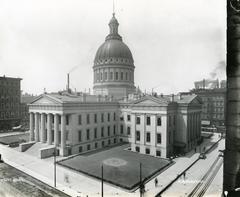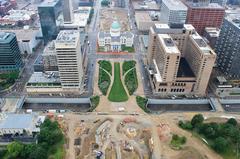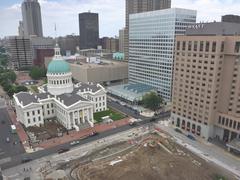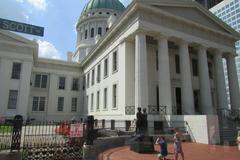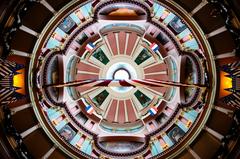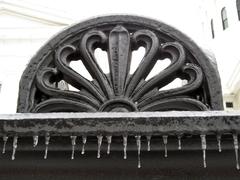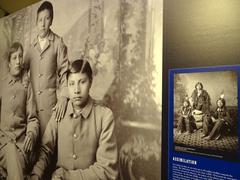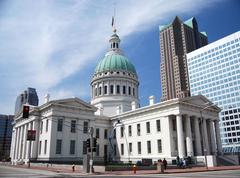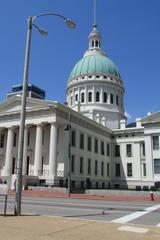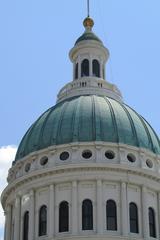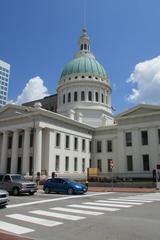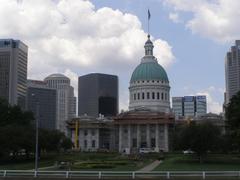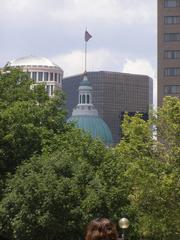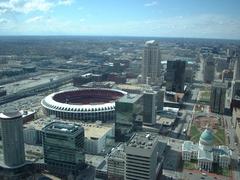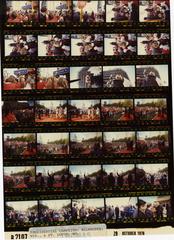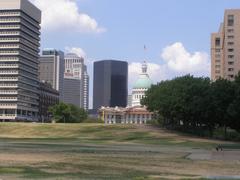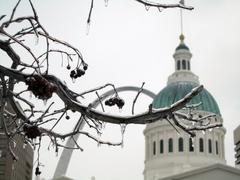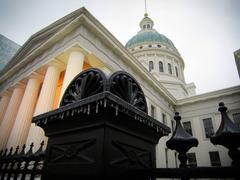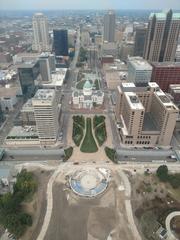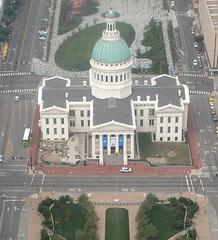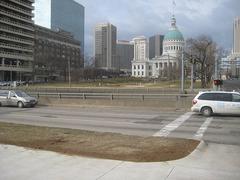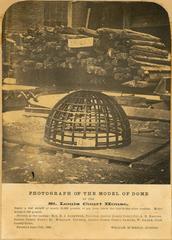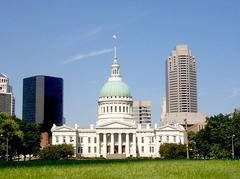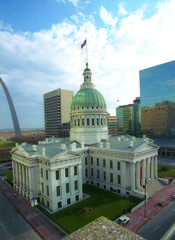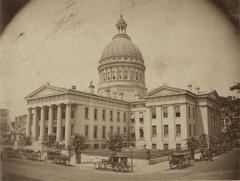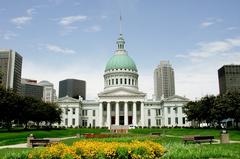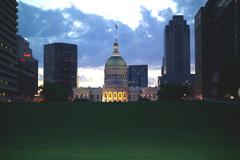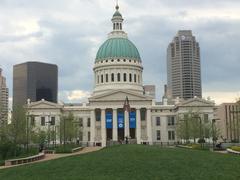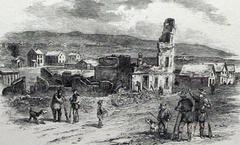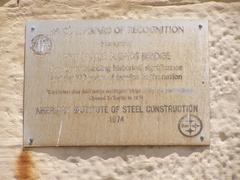
Visiting Old Courthouse in St. Louis: Hours, Tickets, and Travel Tips
Published Date: 24/07/2024
Introduction to the Old Courthouse in St. Louis
The Old Courthouse in St. Louis, Missouri, is a historical and architectural gem that has played a pivotal role in American history. Serving as a landmark for pivotal legal battles and a beacon of architectural evolution, the courthouse is a must-visit for anyone interested in the rich tapestry of America’s past. The site is most renowned for its association with landmark cases such as the Dred Scott case and the Virginia Minor case, which had profound impacts on civil rights and women’s suffrage, respectively (Explore St. Louis). The courthouse’s construction, starting from its original Federal-style design in 1828 to the addition of its iconic dome in the mid-19th century, reflects the city’s growth and architectural trends (Wikipedia). This guide provides a comprehensive overview of what to expect when visiting the Old Courthouse, including its history, ticket information, and nearby attractions. Whether you’re a history enthusiast or a casual visitor, this guide aims to enhance your experience and understanding of this iconic site.
Table of Contents
- Introduction
- Historical Background
- Visitor Information
- Travel Tips and Nearby Attractions
- Accessibility Information
- Frequently Asked Questions (FAQ)
- Conclusion
Historical Background
Early Beginnings and Construction
The Old Courthouse in St. Louis, Missouri, stands as a testament to the city’s rich history and architectural evolution. The land for the courthouse was donated in 1816 by Judge John Baptiste Charles Lucas and St. Louis founder Auguste Chouteau. They stipulated that the land be “used forever as the site on which the courthouse of the County of St. Louis should be erected” (Wikipedia). The original Federal-style courthouse was completed in 1828, marking the beginning of its long-standing presence in the city.
Architectural Evolution
In 1851, a significant redesign of the courthouse began under Robert S. Mitchell. The east wing was torn down and replaced, and from 1855 to 1858, the west wing underwent remodeling. During this period, the courthouse’s iconic dome was added. William Rumbold replaced the original cupola with an Italian Renaissance cast iron dome modeled on St. Peter’s Basilica in Vatican City. This dome, completed in 1864, became a forerunner for many similar domes on government buildings across the United States (Wikipedia).
Role in Westward Expansion
Throughout the 19th century, the Old Courthouse served not only as a judicial center but also as a public gathering place for pioneers planning their westward trek across the plains. It housed thirteen courtrooms in use from 1845 until 1930 and dominated the city’s skyline until the turn of the 20th century when skyscrapers began to rise (NPS).
Landmark Legal Cases
The Old Courthouse is perhaps most famous for its association with two landmark legal cases: the Dred Scott case and the Virginia Minor case. The Dred Scott case, heard in the west wing before its remodeling, involved an enslaved African American man who sued for his freedom. The case ultimately reached the U.S. Supreme Court, which ruled in 1857 that African Americans could not be considered U.S. citizens and had no rights under the Constitution. This decision was a significant factor leading to the Civil War and was later overturned by the 14th Amendment in 1868 (STLPR).
The Virginia Minor case, another significant legal battle, involved a suffragist who sued for her right to vote. This case highlighted the struggle for women’s suffrage and civil rights, further cementing the courthouse’s role in American legal history (Explore St. Louis).
Architectural Significance
The courthouse’s architectural significance is underscored by its innovative design and construction. The iron-framed dome was a pioneering feature, and the rotunda, one of the largest and most ornate rooms in St. Louis, was used for various city activities. The murals in the rotunda, painted by Karl Ferdinand Wimar, depict significant moments in St. Louis history and add to the building’s historical and artistic value (Wikipedia).
Transition to a Historical Monument
When St. Louis County and the city split in 1877, the courthouse became city property. It was abandoned by the city in 1930 after the construction of the Civil Courts Building. During the Great Depression, St. Louis voted for a bond issue to raze nearly 40 blocks around the courthouse to create the new Gateway Arch National Park, initially known as the Jefferson National Expansion Memorial. President Franklin Roosevelt declared the area a national monument in an Executive Order, and the courthouse formally became part of the new monument area in 1940 (Wikipedia).
Renovations and Modern Use
The Old Courthouse has undergone several renovations to preserve its historical integrity and adapt it for modern use. The roof was replaced in 1941 and renovated in 1955, 1985, and 2010. The National Park Service maintains four history galleries on St. Louis and NPS offices within the courthouse. The building, which once housed up to 12 courtrooms, now features two restored courtrooms reflecting different historical periods (NPS).
Current and Future Exhibits
The Old Courthouse is currently closed for renovations as part of the $380 million CityArchRiver project, which includes revamped grounds and a new visitor center for the Gateway Arch. The renovations aim to better reflect the city’s African American history and more thoroughly tell the story of Dred and Harriet Scott. New and refreshed historical exhibits will be installed, including interactive installations and exhibits focusing on the Scotts’ fight for freedom and the architectural features of the building (STLPR).
Special Events and Programs
Throughout the year, the Old Courthouse sponsors a variety of special events and programs. These include holiday concerts, historical reenactments, and educational programs that bring the courthouse’s history to life for visitors. One notable event is the Twelfth Night (Afternoon) Ball, which recreates the French Colonial tradition of Twelfth Night with authentic period music and dance instruction (Explore St. Louis).
Visitor Information
The Old Courthouse is open to the public daily from 8 a.m. to 4:30 p.m., except on Thanksgiving, Christmas, and New Year’s Day. Admission is free, making it an accessible and enriching destination for visitors interested in American history, architecture, and civil rights (Explore St. Louis).
Travel Tips and Nearby Attractions
When planning your visit, consider exploring nearby attractions such as the Gateway Arch, the Museum of Westward Expansion, and the historic Laclede’s Landing. Public transportation options and ample parking make it easy to get around. Be sure to check the weather and wear comfortable walking shoes, as there is much to explore.
Accessibility Information
The Old Courthouse is committed to providing an inclusive experience for all visitors. The building is equipped with ramps and elevators to ensure accessibility for individuals with mobility challenges. Service animals are welcome, and assistive listening devices are available for guided tours and events.
Frequently Asked Questions (FAQ)
What are the visiting hours for the Old Courthouse in St. Louis?
The Old Courthouse is open daily from 8 a.m. to 4:30 p.m., except on major holidays.
Are there guided tours available at the Old Courthouse?
Yes, guided tours are available and can be arranged through the National Park Service. Check their website for current schedules and availability.
How much are tickets for the Old Courthouse?
Admission to the Old Courthouse is free, making it a great option for budget-conscious travelers.
Is the Old Courthouse wheelchair accessible?
Yes, the Old Courthouse is fully accessible to visitors with mobility challenges, including ramps, elevators, and accessible restrooms.
Conclusion
The Old Courthouse in St. Louis is a historical and architectural gem that has played a significant role in the city’s and the nation’s history. Its ongoing renovations and new exhibits promise to enhance its status as a site of learning and reflection for future generations. Plan your visit today and experience the rich history and cultural significance of this iconic site. For more updates, follow us on social media and explore our other articles on St. Louis historical sites.

